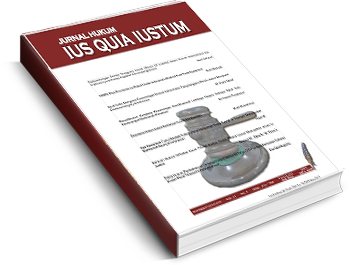Main Article Content
Abstract
The problem formulations of this research are: first, how is the structure of state institutions in Indonesian constitutional system according to the 1945 Constitution of Indonesian Republic? Second, what are the issues in dealing with the conflicts related to state institutions’ authority in Constitutional Court of Indonesian Republic? This research is aimed at: first, analyzing the structure of state institutions in Indonesian constitutional system according to the 1945 Constitution of Indonesian Republic. Second, analyzing and identifying the issues in dealing with any conflicts related to state institutions’ authority in Constitutional Court of Indonesian Republic. This research was a normative legal research. The data analysis was done by using descriptive-qualitative approach. The findings show that: first, the structure of state institutions in Indonesian constitutional system after the amendment of the 1945 Constitution of Indonesian Republic has equal positions since the position of MPR (People’s Consultative Assembly) as the highest state institution has been abolished. After the amendment of the 1945 Constitution, Indonesian constitutional system no longer upholds the teaching of distribution of power, but separation of power. Second, the issues in dealing with the conflicts related to state institutions’ authority in Constitutional Court are the fact that there are differences in each decisions in SKLN, i.e. Decision No. 068/SKLN-III/2004, Constitutional Court Rejects the Petitions of Petitioners. Decision No. 3/SKLN-X/2012, Constitutional Court Grants. And Decision No. 2/SKLN-X/2012 Constitutional Court states Not Granted.
Keywords
Article Details
Authors who publish with this journal agree to the following terms:
a. Authors retain copyright and grant the journal right of first publication with the work simultaneously licensed under a Creative Commons Attribution License that allows others to share the work with an acknowledgement of the work's authorship and initial publication in this journal.
b. Authors are able to enter into separate, additional contractual arrangements for the non-exclusive distribution of the journal's published version of the work (e.g., post it to an institutional repository or publish it in a book), with an acknowledgement of its initial publication in this journal.




